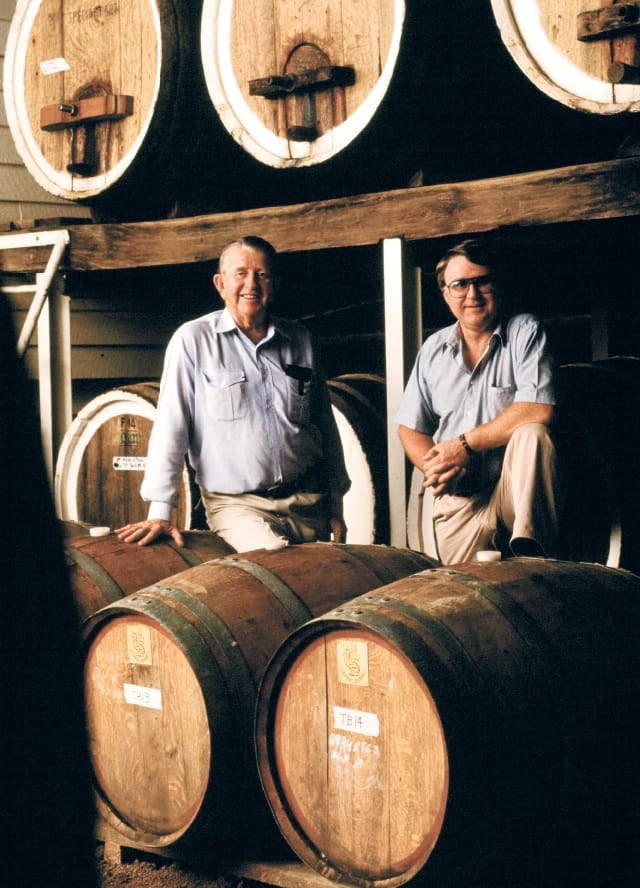
On a wet Tuesday in October I’m sitting in a pub opposite the Adelaide Railway Station waiting for Bruce Tyrrell AM. The mobile rings: he’s running a bit late; showing samples to another journo around the corner. No worries, after the ‘big dry’ no amount of wine drinking pleasure could ever match the enjoyment of staring at rain through a window.
Actually, I’ll take that back: Bruce appears with a carton of Tyrrell’s finest under his arm. He offers an apology and a firm handshake and then places about 10 bottles in a perfect line on our table. They’re all there—Vat 1 Semillon, Vat 47 Chardonnay, Single Vineyard HVD Semillon, Single Vineyard Belford Semillon, Single Vineyard Stevens Semillon, Vat 9 Shiraz, Lunatiq Heathcote Shiraz and the list goes on—shining examples of the good stuff Paul Henry wants the world to know about, in all their gold medal sticker glory.
Bruce, 57, is good fun to break bread with—he tells a good yarn and has more one-liners than Rodney Dangerfield in Caddyshack. And he’s a dream interview because he has an opinion on most things, which is probably why some of the things he says attract headlines, like the time he supposedly called one-time Tesco wine buyer Dan Jago a wanker for suggesting at a conference that Australian wines needed to be more refined. “Which I didn’t do,” says Bruce.
“I was in the lab and this girl from The Daily Telegraph rang in the middle of 10 year tonnage projections—so fairly riveting stuff—and she said that the English supermarket buyers were saying our styles were all wrong. And I said, ‘What, is this some wanker sitting in the backroom reading the Nielsen papers that aren’t worth the paper they’re written on? He was probably selling dog food last week and wouldn’t know port from cold tea.’ And then the conversation went off on another tangent and fifteen minutes later there was talk about what Dan Jago had said. Then I told the journo I’m not necessarily against that, that I do think we have some wines that are too big and need to be more elegant. Well, I must have had 200 people at the London International Wine Fair come up and talk to me, many of whom I’d never met before. Phil Laffer said, ‘You bastard, you got 18 months of free publicity in one morning out of it.’”
A question mark hangs over the bottom end of the Australian commercial wine sector. In 2003, two years after Southcorp merged with Rosemount, Bruce saw what was coming and sold his then burgeoning entry-level Long Flat range to focus more on high-end single vineyard wines, in particular Semillon and Shiraz. “We were doing 380,000 cases of Long Flat and the next step was to take it to a million, but that step was a big one and we were at the edge of our production capacity,” Bruce explains.
“It would have meant a $20 million capital investment. We could have gotten someone else to make it for us, but that’s never been our way. I had also seen what had been planted all over the world—and here—and it looked to me that that part of the market was going to get very cheap and very dirty and it was probably not a bad time to get out of it. I didn’t want to be $4.99 in Coles. I mean, Queen Adelaide has gone now—it was the biggest selling wine in the country only eight years ago. The only product in that area that has really held itself well is Jacob’s Creek—they’ve been phenomenal the way they’ve managed that.
“It was time to step back and start again, to reinvigorate these things (single vineyard wines) that we always had but sort of kept under wraps. It all worked out well but the biggest mistake I made was not turning over my eight major overseas distributors in the first six months because we were pigeon-holed, especially in America. I first went to the US in ’72 and from ’83 I was spending a month and a half a year there; all we had to sell was Long Flat and we did a good job of it, but to get to the next tier was so difficult; it was like we didn’t exist there: ‘Get back down there where you belong.’ When you’re in the fine wine business, like-minded distributors are so important and the UK has been a great example of that; we changed to Fells & Co on January 1 and we’ve done four containers in the past six weeks, averaging $85,000 a container.”
The printer who supplies the little gold medal stickers for Tyrrell’s labels must be loaded. At last count Vat 1 Semillon alone had won 341 of them—and 92 trophies—more gongs than any other Australian white wine. Tyrrell’s was named Winery of the Year in Bruce’s third cousin James Halliday’s 2010 Wine Companion—the Tyrrell’s listings on pages 668-669 are actually difficult to read because they’re just a massive blob of red ink, with 20 wines scoring 90-96 points. Tyrrell’s was also named Winery of the Year in Campbell Mattinson and Gary Walsh’s Big Red Wine Book and Mark Richardson was crowned Winemaker of the Year.
Bruce says accolades are always nice and they help with credibility (as if a 151-year-old winery needs any more cred!), but that you need more than silverware to compete in the modern global wine industry, starting with good market intelligence.
“It’s not what wine writers think or what judges think, it’s what the public thinks,” Bruce says. “I put a lot of credence on the stuff I get out of Wine Intelligence in the UK because they’re talking to consumers. You and I only think we know, they (consumers) are the ones who know and that’s where we’re lucky to have a substantial cellar door. We have 200,000 visitors a year and that’s when we do our best marketing, it’s our opportunity to deal direct with the customer and hopefully turn them into Tyrrell’s groupies.”
Bruce is a great believer in looking after people—“everybody you meet is a potential customer”—and doing all the “one-percenters” in business that together make a difference. A few years ago the Australian Wine & Brandy Corporation brought a group of young UK sommeliers to Australia and they visited Tyrrell’s. It was the last stop on the tour and they were all tired so Bruce thought he had better go easy on them; he took them out to the Bluetongue Brewery he once part-owned and gave them each five different beers to taste and a light dinner, then sent them to bed early. But when they got back to their restaurants in England there was a bottle of Tyrrell’s Vat 1 waiting for them.
“The funny thing is no one else in Australia followed them up,” says Bruce. “No one else did a thing. Earlier this year I spent eight days doing Michelin Star restaurants in the south of England and a third of them already had Vat 1 on the list—the sommeliers knew all about it and I thought to myself, ‘Wow, it worked.’ So it’s that simple stuff that makes a big difference. Vat 1 makes up 15% of our total shipments. This year I’ve travelled more than I ever have; you have to, it’s the nature of the beast. We all need to get the riding boots and moleskins on again and get out there with a box of samples under the arm. We’ve been trying to be too sophisticated … too many suits and too many corporate statements.”
You get the impression that Bruce would be handy to have in the trenches alongside you. Tyrrell’s famously went to the aid of the Drayton family in January last year when winemaker Trevor Drayton and boilermaker Eddie Orgo were killed in an explosion at the winery during vintage. Tyrrell’s and a few other wineries processed all the fruit for Drayton’s and did everything they could to get the historical winery back on its feet. And since the accident Bruce hasn’t hesitated to help out when Max Drayton has phoned asking for advice or just a chat. It says something about his loyalty to people that Bruce still hasn’t forgiven The Daily Telegraph for publishing graphic photographs of Trevor’s parents, Caroline and Max, a day after the accident. “What they did to Trevor’s parents was disgusting, the photo they put on the front page was unnecessary, sensational bullshit, and I’ve banned the paper from the winery,” says Bruce, who was named a Hunter Valley Living Legend this year.
“I was pleased to see that the Trophy for Best 2009 Chardonnay at the Hunter Wine Show went to Drayton’s. Young Will (Rikard-Bell) got up and got it. He’s out of his pressure suit now, which is great. An American financial journalist phoned me earlier this year and asked me why we do things like help the Drayton’s because it must cost a fortune. I had to explain to this guy that these people are our neighbours, our friends; you look after them. I told him, ‘That’s why your game’s over in America—with you guys it’s all been about money and greed.’”

By all accounts Bruce is fiercely loyal to the Tyrrell’s team, too—and generous. Some of the many trophies that come Tyrrell’s way are farmed out to employees’ homes or used in charity fundraisers; a beast is slain and roasted every few days to keep workers happy; and “use your best judgement” is one quality Bruce has instilled in his staff. Tyrrell’s remains true to its grassroots family values: winemaker Mark Richardson recently noted that “all the major management decisions are made around a cup of Joe and a baked bean sandwich” in the lunch room, and during vintage decisions are made in the pokey old lab. And yes, the legendary Murray ‘Flash’ Flannigan is still going strong as cellar door manager after 40 years.
Mention cork to Bruce at your peril. Tyrrell’s has had to pour millions of dollars of wine down the drain over the years because of cork taint and random oxidation. Bruce reckons Tyrrell’s and “Maccas” (McWilliam’s) have suffered more than anyone else from cork’s poor technical performance. He points to two bottles of new-release single vineyard Semillon on the table—an ‘03 and ‘04—and says, “One of the best things that’s ever happened to Semillon is there’s not a bloody cork in sight and now that we’re out of those dirty bastards of things we have a chance to really make this fly. We have been hamstrung by cork for the whole of our life. With 10-11% alcohol, primary fruit, no malo, no wood, no mucking around, the faintest bit of taint shows, whereas if it’s in a Wolf Blass Chardonnay you won’t see it. So we’ve got a whole lot of drinkers to get back, and that’s exciting. Cork taint is one thing, but don’t forget about random oxidation—we reckon one in three bottles was ruined. It’s just unacceptable. If one in three steaks in this joint gave you food poisoning it would be shut down in a week. We’ve put up with it because we haven’t had an alternative, but now we do. The screwcap might not be perfect but by jeez it’s the best thing we’ve got.”
Perhaps the only thing that fires Bruce up more than cork is the AWBC. “I’ve always thought it’s a bloody waste of time and money,” he says.
“It’s almost impossible to get things like people to answer telephones. And then if you do get through, try and get a reply from someone. You have a query on an export country and it’s like, ‘Go and read the Market Grid and if you get it wrong we’ll help.’ The lawyers have been through there and the political correctness and you get no help. The attitude is, ‘You will do what you’re told, we’re not here to serve the industry, you as an industry are here to serve us.’ I’ve told (chairman) Jim Dominguez that, so we’ll see what happens.
“But I think Paul Henry is one of the great things to happen to the Australian wine industry. I know there are a lot of people, particularly at the bigger end of town, who don’t like what he’s doing and don’t like Directions to 2025, but if we continue as we have for the past 15 years we will scratch around at the bottom with the chooks and soon Central Europe is going to get its act together and when it does, the cheap wine market is over. I remember Andrew Margan going through a place in Moldova years ago and he said they were bottling Sauvignon Blanc, canning herrings and bottling pickled onions all in the same room. But they’re getting their act together now. Australia is a drop in the ocean; we’re nowhere near as important as we think we are.”
Bruce predicts much pain for the Australian wine industry as it reinvents itself in the face of multiple challenges. “We’ve got, what, 2,600 wineries? In five years that could be as low as a thousand,” Bruce says. “And a lot of growers won’t be here. The biggest thing for the tiny producer in this industry has been Rudd and Swan in the last Budget stopping people offsetting their tax losses on their vineyard against other income. A guy who works for us has four acres of Chardonnay. He’s always lost money but he could offset it against his income—not anymore. He said, ‘What do I do?’ I said, ‘Pull the bastard out.’ It will break him. That sort of thing is going to have an impact on little towns.”
Bruce speaks highly of the next generation coming through in the Hunter wine industry. “We have a good lot of 40-year-olds coming through, but the 20-year-olds are the best, they’re fantastic. They’re keen, they’re civic minded, they all get on well and if there’s something to be done in the district they all put their hands up. And they’re bloody good winemakers with good palates,” he says. “And I’ll tell you what, it’s a lot better looking generation than ours ever was! I think it helps that our local association is one of the few where grape growers and winemakers are on the same committee, and I think that’s vital. You can’t have a grape growers association and a winemakers association, you have to have one because you’re all in the same industry together. I know down here in South Australia there’s a serious mistrust between growers and winemakers, so maybe you should do the same.”
Asked what inspires him about the wine industry Bruce quips, “It’s a lot better than making bread, isn’t it? Imagine sitting here talking about the best bread we’ve made, or the best nuts and bolts, or the best D-shackles in Australia? It gives you an opportunity for a lifestyle but it’s a very jealous mistress. You travel, you meet a lot of nice people, some of whom become friends for the rest of your life and you see the nice end of the world, particularly if you’re in the quality end of the business. I remember getting off a plane in London with Andrew McPherson about eight years ago and we were both there for 10 days. Andrew said, ‘Well, I probably won’t see you.’ I said, ‘Why?’ He said, ‘Well, I’m going to the dirty end of the business you’re going to the nice end.’ Which was true, he was going to sell £3.99 wine. So, even more incentive for Australia to keep heading upmarket.”
Related content




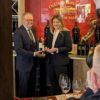

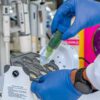
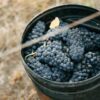



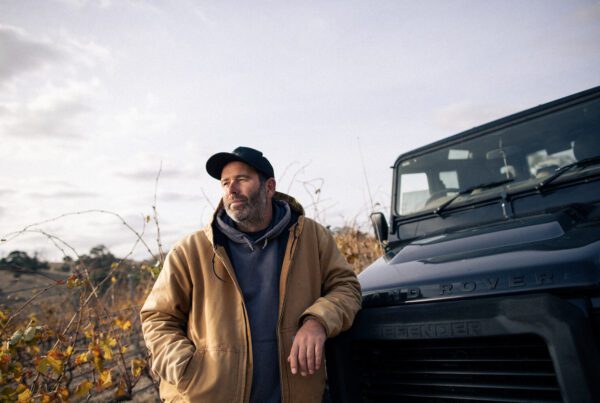

Recent Comments